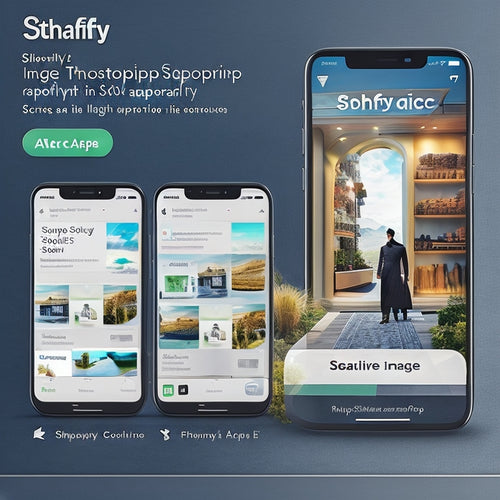
Master Product Design With Mind Maps
Share
You can master product design by leveraging mind maps to break down complex problems into visual, actionable solutions that prioritize user experience. By utilizing mind maps, you'll discover creative solutions and improve your workflow, productivity, and decision-making. Effective mind mapping strategies, such as prioritizing tasks and using visual elements, will help you streamline your design process. As you master the mind mapping process, you'll reveal your full design potential, and your design thinking will elevate to the next level. Now, get ready to uncover the secrets to creating innovative, user-centric designs that revolutionize product design.
Key Takeaways
• Utilize mind maps to visualize complex problems, identify pain points, and discover creative solutions prioritizing user experience in product design.
• Ignite creativity by brainstorming ideas freely, and optimize workflow by streamlining tasks and processes with mind maps.
• Establish clear objectives, prioritize tasks, and identify key user scenarios to create effective mind maps that drive product design.
• Master the mind mapping process by embracing iteration, refining the map as the design evolves, and creating visually appealing diagrams.
• Elevate design thinking by seeking inspiration, practicing active listening, embracing failure, and collaborating with cross-functional teams to develop user-centric designs.
Unlocking Mind Map Potential
By embracing mind maps as a visual problem-solving tool, you can utilize the full potential of your product design process. With mind map applications, you can discover creative solutions that prioritize user experience.
By leveraging visual thinking, you can break down complex problems into manageable, bite-sized chunks. This allows you to focus on crafting innovative solutions that meet your users' needs.
As you navigate the product design process, mind maps help you visualize the flow of interaction, identifying pain points and opportunities for improvement.
By incorporating mind maps into your design workflow, you'll be able to tackle even the most challenging challenges with confidence and clarity.
Mind Map Benefits Uncovered
As you immerse yourself in the world of mind maps, you'll discover that they provide a unique combination of creativity, organization, and clarity, ultimately leading to a more streamlined product design process. By igniting creativity and optimizing workflow, mind maps help you tackle complex problems with ease. Here's a snapshot of the benefits you can expect:
| Benefits | How it Helps | Result |
|---|---|---|
| Igniting Creativity | Brainstorming ideas freely | Innovative solutions |
| Optimizing Workflow | Streamlining tasks and processes | Increased productivity |
| Clarity and Organization | Visualizing complex systems | Better understanding and decision-making |
With mind maps, you'll be able to approach product design with a clear mind, organized thoughts, and a creative spark. This powerful combination will help you create products that truly meet user needs.
Effective Mind Mapping Strategies
You're now ready to take your mind mapping skills to the next level by mastering effective strategies that will help you create visually appealing and informative maps that drive your product design forward.
To get started, focus on prioritizing tasks and identifying key user scenarios that will help you create a clear and concise map. This will make certain that your mind map is both informative and easy to understand.
Here are some additional strategies to keep in mind:
-
Use different colors and symbols to distinguish between tasks, user scenarios, and other elements on your map
-
Keep your map organized by grouping related tasks and scenarios together
-
Use arrows and lines to demonstrate the relationships between different elements on your map
- Don't be hesitant to iterate and refine your map as your design evolves
Mastering the Mind Mapping Process
To master the mind mapping process, start by establishing a clear objective for your map, whether it's to explore user needs, visualize product flows, or identify key design elements. Once you've got your goal, let your creativity shine by brainstorming ideas and concepts related to your objective.
Remember, mind maps are all about making connections, so don't be afraid to think outside the box and explore different paths. As you add more ideas, organize them into categories and subcategories to maximize efficiency. By doing so, you'll create a visually appealing map that's easy to follow and understand.
Elevating Your Design Thinking
By embracing design thinking principles, you'll develop a deeper understanding of your users' needs and behaviors, ultimately creating products that resonate with them on a deeper level. You'll become more empathetic and user-centric, and your designs will reflect this.
Here are some ways to elevate your design thinking:
-
Seek design inspiration from unconventional sources, like nature or art, to spark creative visualization.
-
Practice active listening to truly understand your users' pain points.
-
Embrace failure as an opportunity to learn and iterate.
- Collaborate with cross-functional teams to bring diverse perspectives to the table.
Frequently Asked Questions
Can Mind Maps Be Used for Complex, Multi-Feature Product Designs?
You're wondering if mind maps can handle complex, multi-feature products? Absolutely! They're perfect for iterative prototyping and incorporating user feedback. Just be aware of scalability limitations and customization restrictions, and you'll be mapping like a pro!
How Do I Handle Conflicting Opinions During Team Mind Mapping Sessions?
"When conflicting opinions arise, imagine a referee in a mental wrestling match, and you're the calm, collected coach. Employ your facilitation skills to navigate the chaos, using decision-making strategies like weighted voting or devil's advocacy to reach a harmonious consensus."
Are Mind Maps Suitable for Designing Products With a Large User Base?
When designing for a large user base, you'll find mind maps incredibly useful for organizing user research and feedback analysis, which then inform your iterative prototyping and testing phases, ensuring a product that truly resonates with your diverse audience.
Can Mind Maps Be Used in Conjunction With Other Design Thinking Tools?
Imagine a puzzle coming together - you're piecing together brainstorming techniques and creativity techniques to create a masterpiece! Yes, you can combine mind maps with other design thinking tools to supercharge your visual organization and release innovative solutions.
How Do I Ensure Mind Maps Are Accessible to Team Members With Disabilities?
When creating mind maps, you guarantee accessibility for team members with disabilities by incorporating accessibility considerations and inclusive design, utilizing assistive technology, and encouraging team engagement to assure everyone's on the same page.
Related Posts
-
Enhancing E-Commerce With Interactive Shoppable Videos
Interactive shoppable videos have revolutionized the e-commerce landscape, offering businesses a powerful tool to enh...
-

Top Digital Tools for Cost-Benefit Analysis
You're about to turbocharge your cost-benefit analysis with top digital tools that drive business growth. Begin with ...
-

Essential SEO Apps for Shopify: Boost Your Store's Visibility
This article explores the significance of SEO apps for Shopify stores in enhancing visibility and ranking in search ...

